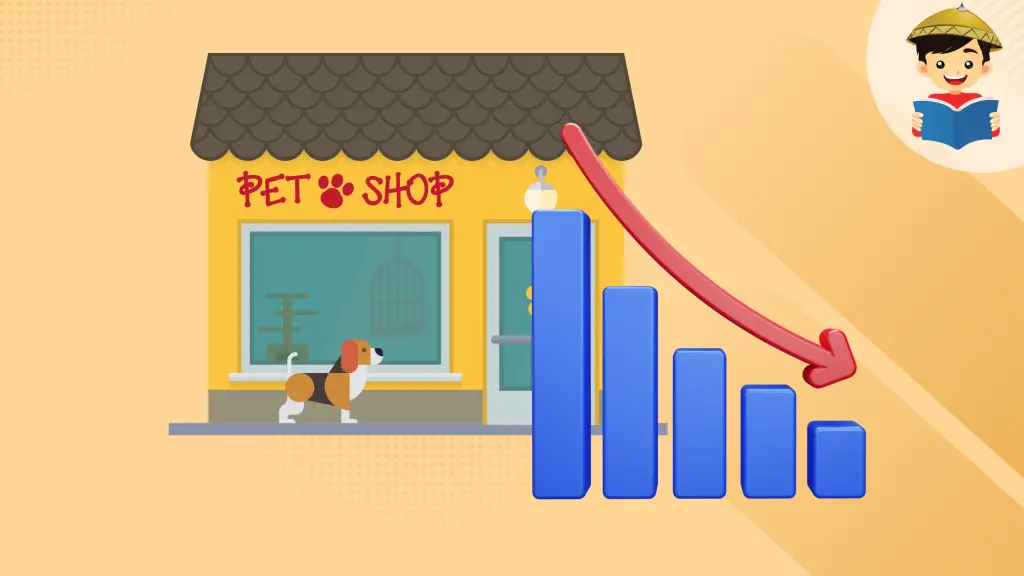How To Write Viewpoint in Case Study (With Examples)

Your goal in writing a case study is to analyze and provide solutions to a problem that a business or organization tackles.
To achieve this, your analysis must be framed from the perspective of someone who can solve your case study’s problem, such as the firm’s Chief Executive Officer, a department director, or a shop manager. The Viewpoint of a Case Study is the portion where you put yourself in the shoes of that handpicked individual.
In this article, we will present and elaborate on the steps in writing the viewpoint of the case study so you can select whose perspective best suits your case study’s problem.
Table of Contents
- What Is Viewpoint in a Case Study?
- What Is the Importance of the Viewpoint of the Case Study?
- How To Write a Viewpoint in Case Study?
- Examples of Viewpoint of Case Study
- Tips and Warnings
- Frequently Asked Questions
- References
What Is Viewpoint in a Case Study?
The Viewpoint or Point of View in a case study indicates the person who has the authority, ability, and expertise to recommend and decide how to solve your case study’s problem. Once you have identified this person, you will assume his/her role in analyzing the problem. Basically, this portion tells the readers that you are viewing the given case in the eyes of your selected person.
Suppose that your case study involves recruitment issues in a firm. In this case, you can use the HR manager’s perspective as your case study’s viewpoint. The HR manager has the appropriate skill sets and knowledge about the firm’s recruitment process, making him/her qualified to decide regarding this issue.
Most case studies state the individual’s name whose perspective serves as the Viewpoint of the Case Study (e.g., Mr. Juan Dela Cruz). However, there are also those that just indicate this specific person’s title or position in the company (e.g., Chief Executive Officer).
Some case studies use the term “Point of View” or “Protagonist of Case Study1” instead of Viewpoint.
The Viewpoint is located at the beginning of the case study, usually after the “Statement of the Facts” portion.
What Is the Importance of the Viewpoint of the Case Study?
People have different perspectives about a particular issue of an organization. For this reason, it is challenging to concentrate or focus our analysis since it can be viewed from multiple points of view.
For instance, a finance officer may attribute the decline in sales to insufficient funds disbursed to the marketing department. Meanwhile, a sales officer may attribute the same problem to the increasing market competition. This variation in perspectives makes it more challenging to develop the most appropriate approach to analyze the problem.
Limiting the perspective of your case study to the most suitable person makes your analysis more concise and straightforward. There is no need to capture everyone’s perspective since the viewpoint of your selected individual is the only relevant and valuable one.
How To Write a Viewpoint in Case Study?
Writing your case study’s viewpoint is pretty straightforward. All you have to do is to follow the given steps below:
1. Start by Reviewing Your Case Study’s Problem
Review and identify in which “field” or “category” your case study’s problem belongs. Say your case study’s issue is about the declining satisfaction level of the firm’s customer service department, as reflected by their recent survey. The category which this problem falls under is apparently “customer service”.
Another example: if your case study’s problem is rooted in how a firm drew flak from the public for its waste disposal mechanisms that have degraded the natural environment around a certain community, then this problem falls under “environment and waste disposal”
2. Identify the Person(s) That You Think Has the Ability and Authority To Decide and Solve Your Case Study’s Problem
Shortlist people who you think can qualify as the viewpoint. Ensure the candidates are involved in the “category” or “field” where your problem belongs. Afterward, determine who is the most qualified to decide for your case.
Using our previous example, you may select from the following individuals the viewpoint for the problem of the declining satisfaction level of the firm’s customer service:
- The firm’s CEO
- The Director of the firm’s customer service department
- A customer service employee
All of them can be a suitable viewpoint since they are all involved in the particular category where the problem belongs. However, you should only select one person. If we analyze each individual:
- The firm’s CEO – Although he/she has the highest authority in the firm, he/she might have no specialized knowledge about customer service. Thus, we cannot select him/her as a viewpoint.
- The Director of the firm’s customer service department – This person supervises the entire customer service arm of the company so he/she knows everything about it, including its nitty-gritty processes. This person is the best viewpoint for our problem.
- A customer service employee – Although this person has skill and experience in handling customers’ concerns and queries, he/she has no authority to change something in the firm’s current customer service system. Thus, we cannot select him/her as a viewpoint.
Upon analysis, the most suitable perspective to use for this case study’s problem is that of the Director of the customer service department.
Once you have figured out the Viewpoint of your case study, you may now explicitly state in your manuscript his/her name and title or position in the firm.
3. Justify Why You Have Selected That Person(s) As Your Case Study’s Point of View (Optional)
Explain why you have selected this person by stating his/her role, experiences, and contributions to the firm or organization.
Some published case studies do not put justification for their selected viewpoint since it is optional. However, it is advised to include one to make this portion more detailed.
Examples of Viewpoint of Case Study
To help you further understand how to create the viewpoint of a case study, we have provided you with some examples that you may use as a reference.
Example 1

Case Study Problem: The popularity and momentum of Netflix Inc. start to wane as it loses around 200,000 subscribers in the first quarter of 2022, resulting in lower investor confidence in the firm.
Viewpoint: Reed Hastings, Chief Executive Officer (CEO) and co-founder of Netflix.
The CEO has the highest authority to decide how to solve Netflix’s problem. He also oversees the entire operation, making him qualified to deal with the problem.
The straightforward example above simply states the name of the selected viewpoint and then his position or title in the company. However, although the example above already satisfies what a viewpoint is, the format used in this example lacks justification. Let’s look at the next example which includes reasons or justification for the selected viewpoint.
Example 2

Case Study problem: The marketing and publicity department of Solstice Clothing Line decided to concentrate their marketing efforts in the digital realm during the height of the COVID-19 pandemic, which drove their reach and engagement upward in the early quarters of 2019. However, in the last quarter of the same year, the business experienced a gradual decline in its overall engagement levels on its social media handles.
Viewpoint: The problem needs the expertise of Celine Garcia, the Marketing and Publicity Director of Solstice Clothing Line. She is in charge of assessing the performance of the clothing line’s marketing officers, approving digital marketing content, and evaluating the level of engagement with digital publicity materials.
This example mentions the name of the chosen person together with her position in the firm. It also explains the reason why she was selected as a viewpoint by stating her role in the business.
Example 3

Case Study Problem: Paws Corner is one of the largest pet shops in the National Capital Region. It serves as a haven for different types of pet animals until a willing person adopts them. In 2017, the Paws Corner experienced a continuous decline in profit due to the increasing rental and operating costs. For this reason, the business is faced with the dilemma of whether to continue its operations or to close it indefinitely.
Viewpoint: Mr. Lito Cruz, the manager, and owner of Paws Corner, has led the operations of Paws Corner since 2015. He manages the day-to-day transactions of Paws Corner and keeps track of its revenues and expenses. He is a certified animal lover and an entrepreneur at heart.
The example above stated the most appropriate perspective that must be used for the case study (which is its manager and owner). There’s also an explanation to justify why he was selected as the viewpoint.
Tips and Warnings
- Narrow down your case study’s viewpoint to a single individual. Although a case study can be approached through multiple perspectives, it’s better to limit your case study’s Viewpoint to a single person who can best decide on the problem. This will also make your analysis of the case easier and less complex.
- If the case being analyzed involves a certain department of an organization, the best viewpoint of the case study is the department head. For example, if your case involves the financial management of an organization, you can select the Director of Finance of that organization as your viewpoint.
Frequently Asked Questions
1. What point of view should a case study be written in?
Since a case study is a form of formal writing, it is usually written in the third-person perspective. Hence, pronouns such as “He”, “She”, “They”, and “It” are generally used in case studies.
References
- Schweitzer, K. (2019). Writing Business Case Studies for Class. Retrieved 23 May 2022, from https://www.thoughtco.com/how-to-write-and-format-a-business-case-study-466324
Written by Jewel Kyle Fabula
Jewel Kyle Fabula
Jewel Kyle Fabula graduated Cum Laude with a degree of Bachelor of Science in Economics from the University of the Philippines Diliman. He is also a nominee for the 2023 Gerardo Sicat Award for Best Undergraduate Thesis in Economics. He is currently a freelance content writer with writing experience related to technology, artificial intelligence, ergonomic products, and education. Kyle loves cats, mathematics, playing video games, and listening to music.
Copyright Notice
All materials contained on this site are protected by the Republic of the Philippines copyright law and may not be reproduced, distributed, transmitted, displayed, published, or broadcast without the prior written permission of filipiknow.net or in the case of third party materials, the owner of that content. You may not alter or remove any trademark, copyright, or other notice from copies of the content. Be warned that we have already reported and helped terminate several websites and YouTube channels for blatantly stealing our content. If you wish to use filipiknow.net content for commercial purposes, such as for content syndication, etc., please contact us at legal(at)filipiknow(dot)net
